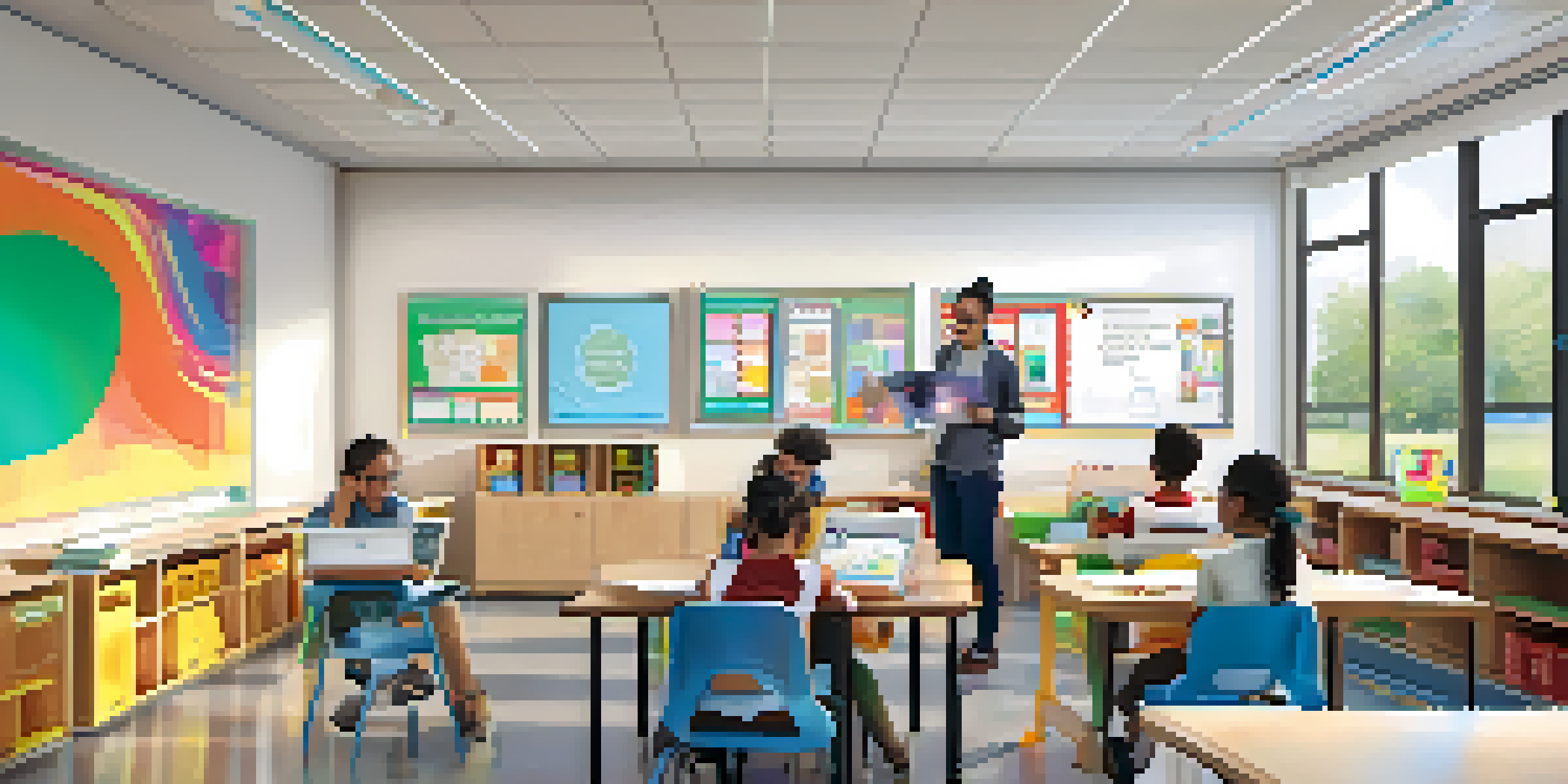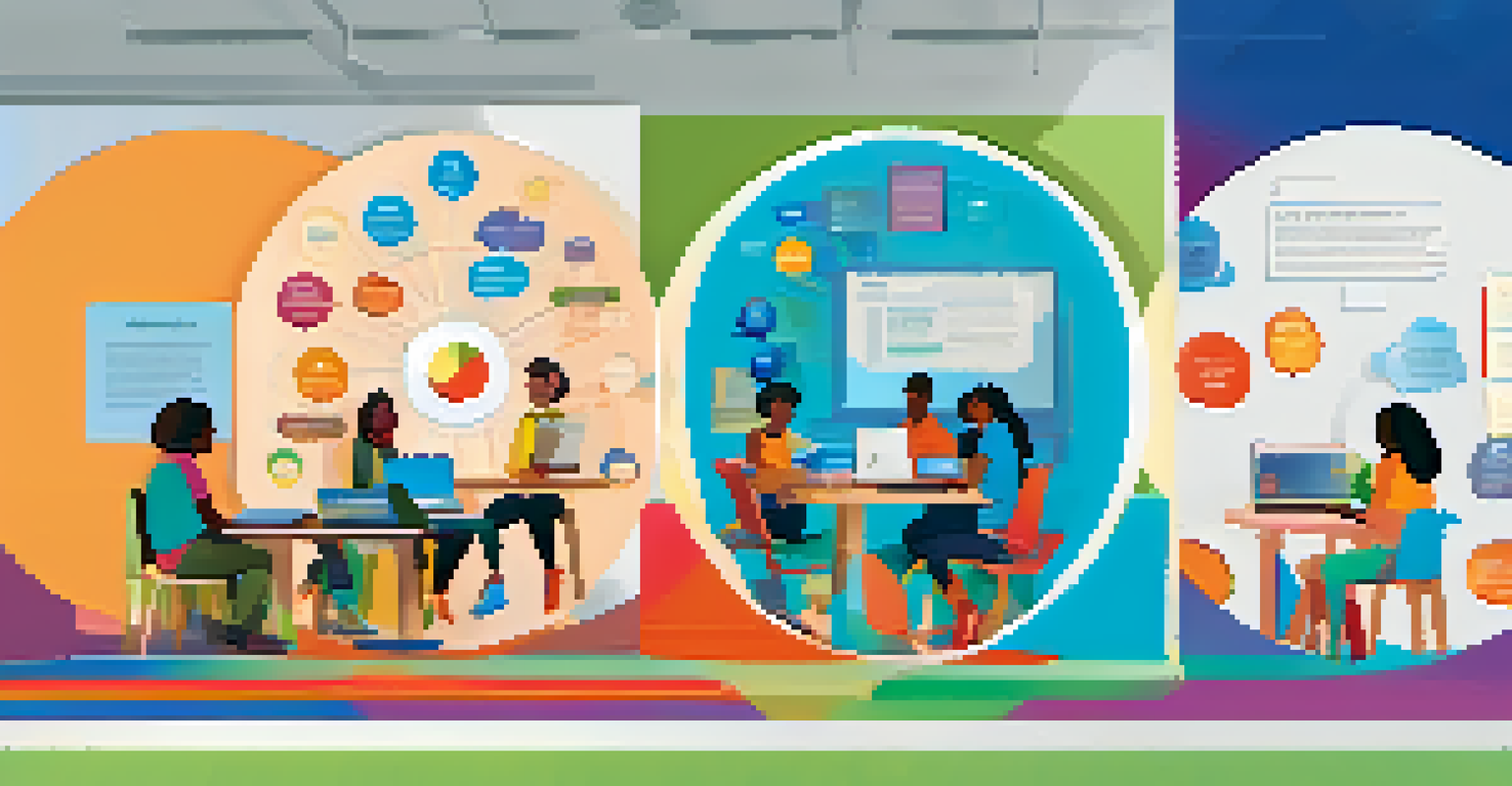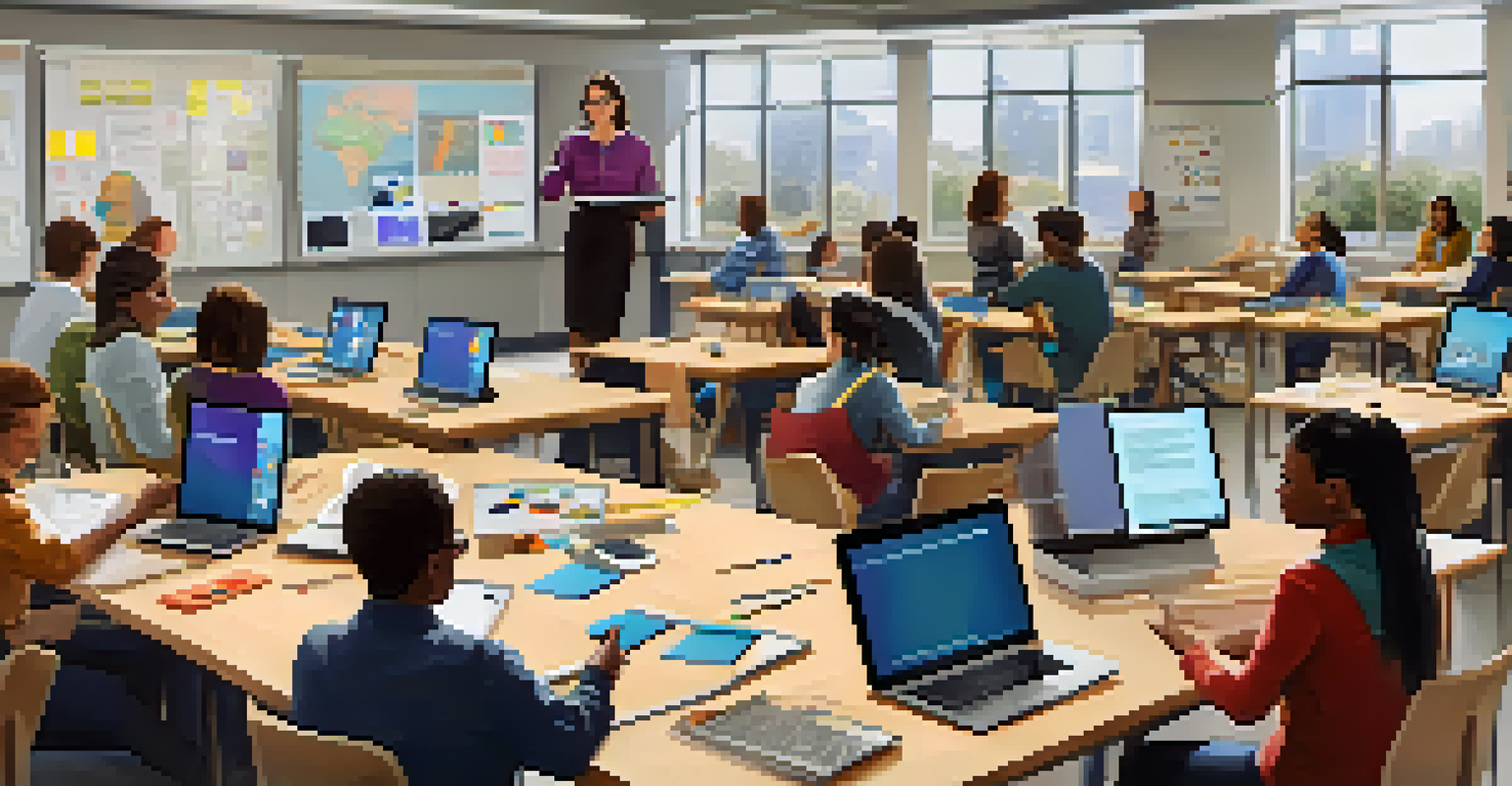Blended Learning Models: Engaging Strategies for All Learners

Understanding Blended Learning: A Simple Overview
Blended learning combines traditional face-to-face teaching with online instruction, creating a more flexible learning environment. This model allows educators to tailor their teaching methods to meet the diverse needs of their students. For example, a student might attend a classroom session and then complete supplementary online modules at their own pace, making learning more personalized.
Learning is not the product of teaching. Learning is the product of the activity of learners.
The beauty of blended learning lies in its versatility. It can be adapted to various subjects and educational levels, from elementary schools to universities. By leveraging technology, teachers can engage students in new ways, making lessons more dynamic and interactive.
Ultimately, blended learning promotes a culture of self-directed learning, encouraging students to take charge of their education. This empowerment can lead to better retention of information and higher levels of student satisfaction.
Different Models of Blended Learning Explained
There are several blended learning models, each with its unique approach. The Rotation Model, for instance, involves students rotating between different learning modalities, such as online and in-person classes. This structure keeps students engaged and allows them to experience varied teaching styles.

Another popular model is the Flex Model, where online learning is the primary mode of delivery, with in-person support as needed. This approach is particularly beneficial for older students who may have more responsibilities outside of school, offering them the flexibility they need.
Blended Learning Enhances Flexibility
Blended learning combines traditional and online teaching to create personalized and adaptable educational experiences.
Lastly, the Enriched Virtual Model combines online coursework with scheduled face-to-face check-ins. This model offers the best of both worlds, allowing for meaningful interactions while still providing the freedom to learn independently.
The Importance of Teacher Training in Blended Learning
Effective blended learning hinges on well-trained educators who are comfortable integrating technology into their teaching. Professional development programs should focus on equipping teachers with the skills they need to navigate this hybrid model successfully. After all, a confident teacher can inspire confidence in their students.
Education is not the filling of a pail, but the lighting of a fire.
Training sessions can include hands-on workshops, where teachers can explore various digital tools and platforms. This practice enables them to discover what works best for their teaching style and their students' learning preferences. For instance, a teacher might learn how to use a learning management system to streamline assignments and feedback.
Ultimately, continuous support and resources for teachers foster a positive learning environment. When educators feel empowered, they can create engaging and innovative lessons that resonate with students.
Engaging Students: Strategies for Success
Engaging students in a blended learning environment requires a mix of creativity and technology. Using interactive tools, such as quizzes and discussion forums, can keep students motivated and connected. Imagine a classroom buzzing with excitement as students participate in a live poll during a lesson.
Moreover, providing choices in assignments can boost student motivation. For example, allowing students to choose between a video presentation or a written report can cater to different learning styles and preferences. This autonomy can lead to greater investment in their work.
Engagement Strategies Boost Learning
Utilizing interactive tools and offering choices in assignments can significantly enhance student motivation and participation.
Incorporating gamification elements, like badges or leaderboards, can also enhance engagement. These elements add a fun, competitive edge to learning, encouraging students to push themselves further and celebrate their achievements.
Assessments in Blended Learning: Balancing Methods
Assessment in blended learning should encompass a variety of methods to truly gauge student comprehension. Traditional tests remain essential, but incorporating project-based assessments allows for a deeper understanding of concepts. For example, students might work in teams to create a presentation on a topic, demonstrating their knowledge in a collaborative way.
Formative assessments, such as quizzes and feedback surveys, can help educators identify areas where students may struggle. These ongoing assessments also give students a chance to reflect on their learning and adjust their study habits accordingly. Think of it as a GPS guiding them on their educational journey.
Finally, peer assessments can foster a sense of community and shared responsibility. When students evaluate each other's work, they develop critical thinking skills and learn to appreciate diverse perspectives.
Overcoming Challenges in Implementing Blended Learning
Implementing blended learning can present challenges, such as resistance to change from both teachers and students. Some educators may feel overwhelmed by the technology or unsure about how to effectively blend their teaching methods. Addressing these concerns through clear communication and support is crucial for a smooth transition.
Another challenge is ensuring all students have access to the necessary technology. Schools should strive to provide equitable resources, whether through loaner devices or community partnerships. This commitment to equity helps ensure that no student is left behind in the digital age.
Future Trends Shape Education
Emerging technologies like VR and AI are set to transform blended learning, offering immersive and personalized educational experiences.
Lastly, maintaining student engagement in a blended environment can be tricky. Regular check-ins and communication with students can help keep them motivated. By fostering an open dialogue, educators can address any issues promptly and keep students on track.
Future Trends in Blended Learning Models
As technology continues to evolve, so too will blended learning models. Virtual reality (VR) and augmented reality (AR) are beginning to find their way into classrooms, offering immersive experiences that traditional methods simply can't match. Imagine students exploring ancient civilizations through a VR headset as part of their history lesson.
Artificial intelligence (AI) may also play a significant role in personalizing learning experiences. AI-driven platforms can analyze student performance and adapt lessons in real-time, ensuring that each learner receives the support they need. This tailored approach could revolutionize how we understand and implement education.

Ultimately, the future of blended learning holds exciting possibilities. As we embrace these advancements, the goal remains the same: to create engaging, effective, and inclusive learning environments for all students.